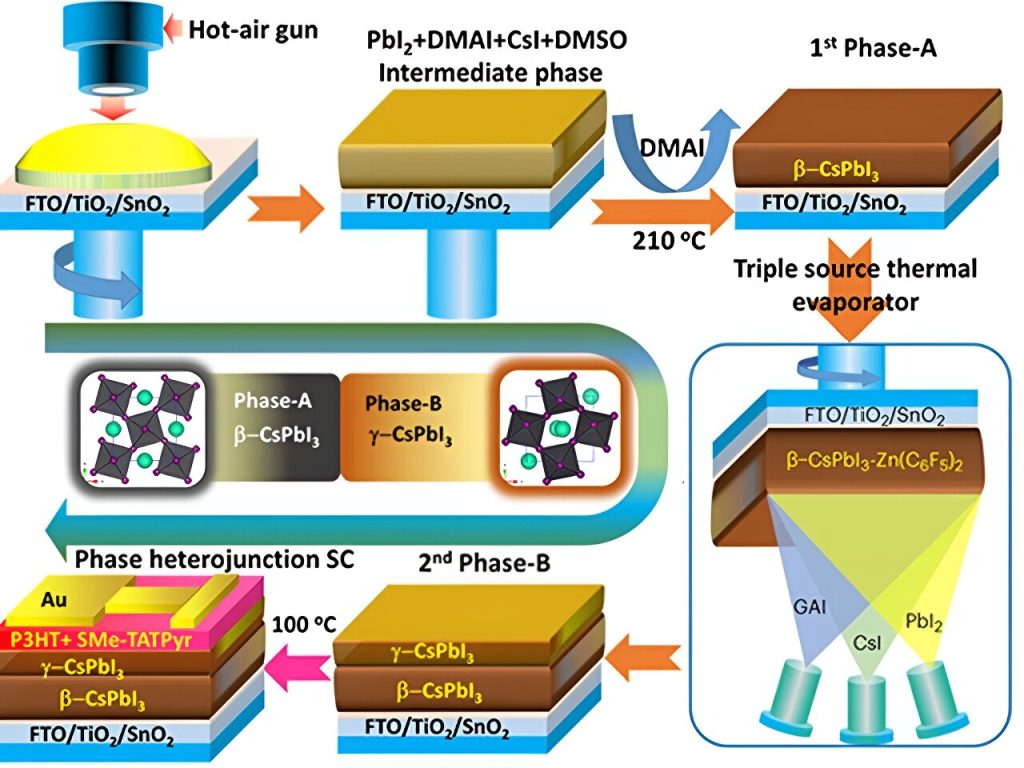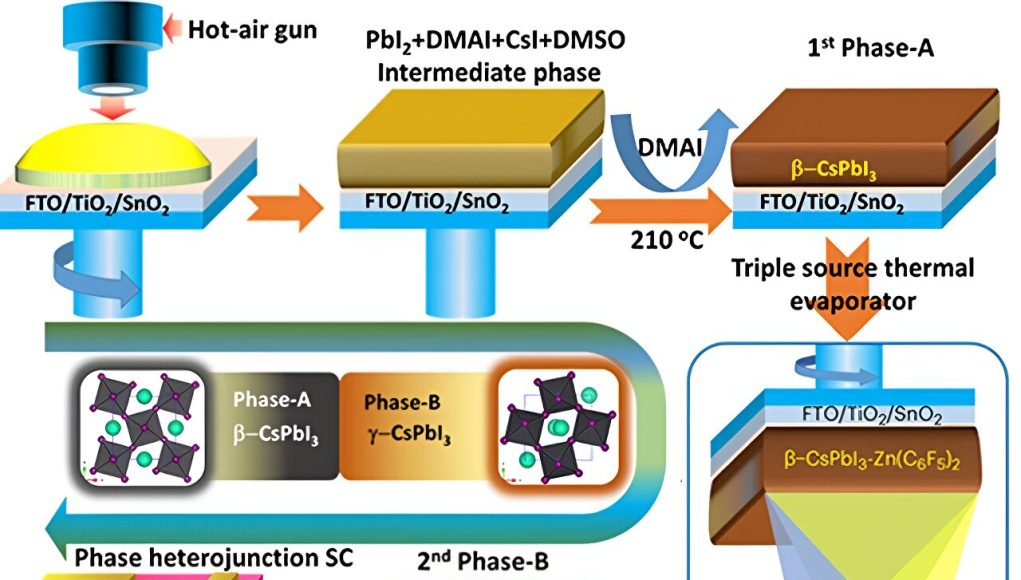Perovskite solar materials have long held the promise of being more cost-effective and sustainable than traditional silicon solar cells. However, their practical application has faced challenges due to durability issues. Scientists Pioneer Stable Efficient Next-Gen Solar Cells. A group of scientists from around the world, including Nelson Dzade, a professor at Penn State, has made a big discovery: they have found a new way to make durable perovskite solar cells that keep turning sunlight into electricity at an impressive 21.59% efficiency.

The Potential of Perovskite Solar Cells
Perovskite solar technology offers a compelling alternative to traditional silicon cells. They can be manufactured at room temperature with significantly lower energy requirements, making them both cost-effective and environmentally friendly. Scientists Pioneer Stable Efficient Next-Gen Solar Cells. However, the organic parts in the top contenders for these solar cells can break down when exposed to water, oxygen, and heat, which means they will not work as well in real life.
Overcoming the Hurdles
To address these issues, scientists have turned to all-inorganic perovskite materials, such as cesium lead iodide, known for their superior electrical properties and environmental resilience. However, the fact that cesium lead iodide can change forms and has different crystalline structures makes things more difficult. While two of these phases are ideal for solar cells, they can spontaneously convert to a less favorable phase at room temperature, introducing defects and reducing solar cell efficiency.
The Phase-Heterojunction Solution
The big step forward was making a phase-heterojunction by combining the two photoactive forms of cesium lead iodide. Heterojunctions are made by stacking different types of semiconductors, which makes layers in a solar cell that have different optical and electrical properties. These junctions enhance energy absorption and improve electricity conversion efficiency. The result is enhanced stability as well as the prevention of undesirable phase conversions.
Impressive Results
The researchers achieved remarkable results, with a power conversion efficiency of 21.59% and exceptional stability. Even after 200 hours of storage under ambient conditions, the devices maintained over 90% of their initial efficiency.
Scaling for Real-World Use
When scaled to real-world solar modules, the design exhibited a power conversion efficiency of 18.43% for a solar cell area of more than 7 square inches. This demonstrates the potential for developing large-scale perovskite solar cell modules and reliably assessing their stability.
Atomic-Scale Insight
Nelson Dzade, in collaboration with colleagues at Chonnam University in South Korea, delved into the atomic-scale structure and electronic properties of the heterojunction. This approach created a stable and coherent interface structure that promotes efficient charge separation and transfer, essential for achieving high-efficiency solar devices.
Dual Deposition Technique
The researchers at Chonnam University introduced a unique dual-deposition method for fabricating the device. By using hot air to deposit one phase and triple-source thermal evaporation to deposit the other, they were able to improve the electrical properties, efficiency, and stability even more by adding molecular and organic additives during the deposition process.
We think that the dual deposition technique could improve all-inorganic perovskite solar cells and could also be used for other halide perovskite compositions. Future work will focus on enhancing the durability of phase-heterojunction cells in real-world conditions and scaling them to the size of traditional solar panels. With this remarkable approach, the efficiency of perovskite solar cells could soon surpass 25%, bringing commercialization tantalizingly close. In the realm of renewable energy, the future shines brighter than ever, thanks to the ingenuity of these scientists and their pioneering work on perovskite solar cells.
Journal Reference:
- Sawanta S. Mali, Jyoti V. Patil, Jiang-Yang Shao, Yu-Wu Zhong, Sachin R. Rondiya, Nelson Y. Dzade, and Chang Kook Hong Phase-heterojunction all-inorganic perovskite solar cells surpass 21.5% efficiency. Nature Energy, 2023, 8 (9): 989 DOI: 1038/s41560-023-01310-y
Read our previous articles: https://scitechupdate.com/index.php/zinc-should-get-from-food-not-supplements/
https://scitechupdate.com/index.php/three-nobel-prizes-try-to-cover-all-of-science/
https://scitechupdate.com/index.php/the-most-populated-cities-in-the-world/
https://scitechupdate.com/index.php/aromas-and-odors-decoding-the-insect-brains-interpretation/
https://scitechupdate.com/index.php/pig-kidney-xenotransplantation-is-thriving-in-human-body/
https://scitechupdate.com/index.php/huaweis-new-smartphone-challenger-to-apple/
https://scitechupdate.com/index.php/israel-advances-cancer-treatment-with-genomic-profiling/https://scitechupdate.com/index.php/stomach-cancer-causes-signs-and-treatment/
https://scitechupdate.com/index.php/james-webb-telescope-captures-newborn-sun-like-star/
https://scitechupdate.com/index.php/oxygen-28-unstable-magic-isotope-that-defies-expectations/









Usually I do not read article on blogs, however I would like to say that this write-up very compelled me to take a look at and do it! Your writing style has been amazed me. Thank you, very nice article.
Thank you
I was recommended this website by my cousin. I am not sure whether this post is written by him as nobody else know such detailed about my difficulty. You are wonderful! Thanks!